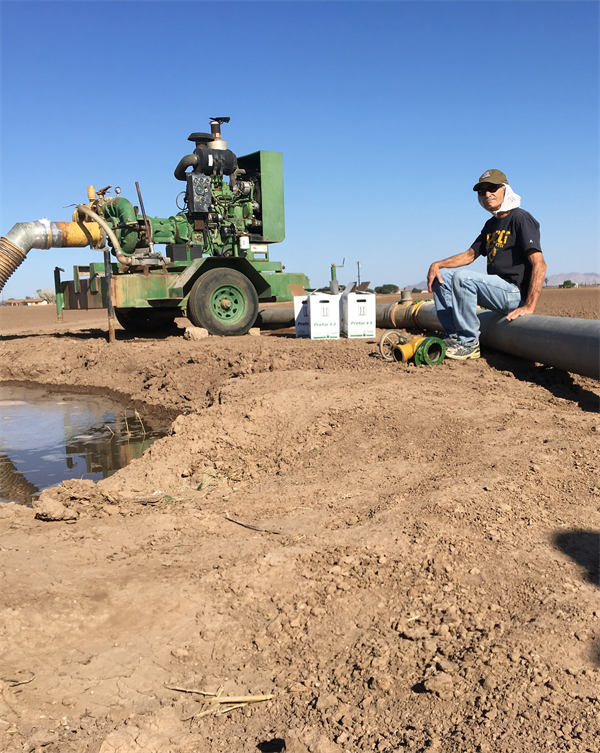Dec 15, 2021
Colorado River Management
The Colorado River Compact of 1922 was formally negotiated among the basin states (Figure 1) to define how much water from the Colorado River can be used by each state on an annual basis. In 2007, basin states negotiated interim guidelines to deal with Colorado River water shortages and determine the reductions for each state depending on the elevation of water in Lake Mead. Another series of agreements have included Colorado River water allocations to Mexico.
After more than 20 years of drought, reduced flows in the Colorado River are now resulting in some serious steps to arrest the decline of the major storage reservoirs, Lakes Powell and Mead. The Drought Contingency Plan (DCP) Authorization Act was agreed to by the lower basin states (Nevada, California, and Arizona) and signed into law on 16 April 2019. Participation from Mexico was determined through a U.S. – Mexico agreement. The DCP outlines a process, dependent upon triggers related to the water level in Lake Mead that is intended to protect the Colorado River system through voluntary reductions and increased conservation. Similarly, there is an Upper Basin DCP involving Colorado, New Mexico, Utah, and Wyoming. The lower basin DCP will extend through the end of 2026 and consists of increasing reductions in Colorado River use in Tiers 1, 2a, 2b, and 3 at Lake Mead elevation levels of 1,075; 1,050; 1,045; and 1,025 ft. above sea level, respectively.
With the water level in Lake Mead below 1,075 ft. above sea level, the Tier 1 water allocation reductions have been called into action by the Bureau of Reclamation beginning in January 2022.
Arizona will suffer the biggest cuts because it agreed in the 1960s to take the lowest priority among the Lower Basin states. According to the DCP, Tier 1 requires a 512,000 acre-foot (AF) reduction in Arizona’s 2.8M AF annual allocation. This reduction is primarily being taken from the agricultural irrigation districts associated with the Central Arizona Project (CAP), primarily impacting agricultural areas in Pinal County. It is important to note that urban/metropolitan and tribal water allocations are not reduced in Tier 1 conditions.
Even with the DCP reductions, there are still valid concerns regarding the rate of decline of Lakes Mead and Powell with a continuation of existing weather patterns. As a result, representatives from Nevada, California, and Arizona have been working on an additional plan to provide further reductions of water use from the Colorado River with a goal of achieving an additional 500,000 AF to leave in Lake Mead. This would serve to nearly double the conservation of Colorado River water and further reduce the rate of decline in Lake Mead. For California, this would mean they will take water reductions prior to reaching DCP levels that would trigger their mandatory cuts.
This new proposal is being referred to as the “500+ Plan” and it would be entirely voluntary among entities in the lower basin states to participate. It is estimated that $100M will be needed to implement this plan for further reductions in Colorado River water allocations from the three lower basin states. For example, this plan would include payments to farmers for fallowing land to save water. The water agencies from these three states are working to find the money to support this effort and Arizona has pledged $40M to support the plan. California and Nevada have the plan under review for funding and additional funding could possibly come from the federal government to make this work.
In the past two decades, the flow of water in the Colorado River has declined nearly 20% below the 20th century average. As a result, extractions from the Colorado River have exceeded inputs and in time this catches up with us. These plans are important for everyone living in the desert Southwest with a dependence on the Colorado River. Therefore, all steps to conserve this valuable source of water are critical. In Arizona, approximately 70% of the water is diverted to agriculture and our efforts to provide good stewardship and management of our water resources are always important and increasingly so under these circumstances.
Reference:
Colorado River Drought Contingency Plan: Arizona Implementation. Central Arizona Project
https://library.cap-az.com/documents/departments/planning/colorado-river-programs/CAP-FactSheet-DCP.pdf

Figure1. The Colorado River watershed of seven western U.S. states and 2 Mexican states. Source: USGS.
To contact Jeff Silvertooth go to:
silver@ag.arizona.edu











